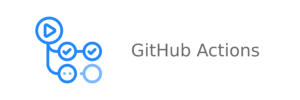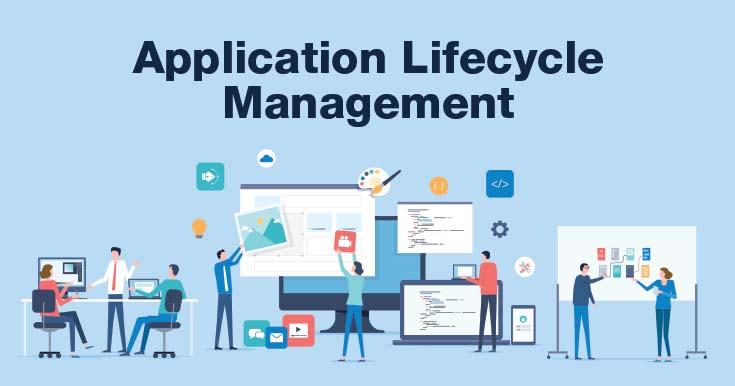Best Practices to Integrate Security Into DevSecOps

Many organizations are under pressure to deliver software quickly and effectively. They have adopted DevOps, which promotes communication and collaboration between developers and IT professionals.
To fully benefit from DevOps, organizations should also embrace DevSecOps, which integrates security into the software development process. By automating security measures and incorporating them into development, organizations can reduce vulnerabilities and ensure secure applications.
Importance of Security in DevOps
DevOps is fast, but traditional security slows it down. SecOps enhances collaboration, provides tools and training to prevent and address security threats promptly, and improves system monitoring.
Common Practices in DevSecOps
- Secure application development process
Ensure that only authorized developers have access to code repositories. Review and approve code changes before merging them into the main branch. This maintains trusted developers and promotes cybersecurity best practices.
- Protect production environment
Segment the production environment into separate tiers with different access levels and security controls. This safeguards the environment, so if one tier is compromised, others remain protected.
- Implement least-privilege principles
Follow principle of least privilege by granting users only the necessary permissions for their job. Avoid granting excessive access to DevOps resources.
Best Strategies & Practices
1- Leverage Automation Whenever Possible
To meet fast delivery times, DevOps teams prioritize speed in CI/CD. For efficient security integration, DevOps and DevSecOps teams should automate security tests and controls throughout the development cycle. Automation prevents security from becoming a bottleneck. A wide range of test automation tools with unique functionality are available.
2- Automate Thoughtfully
Automation is used for a reason—to keep pipelines fast and productive. This often means carefully planning automation processes. Here are several best practices to consider:
- Be selective – Static application security testing (SAST) does not scan the entire application source code on a daily basis, providing too much information. Instead, it scans for certain changes in the code committed during each day.
- Be dynamic – Dynamic application security testing (DAST) can help you find vulnerabilities during runtime.
- Be careful – Use your automated DAST scans to check vulnerability lists created by databases. Also, check for common vulnerabilities issues that might have been missed by SAST scans.
- Be effective – Use smart features that prioritize alerts and prevent alert fatigue.
3- Red Teams, Blue Teams, and Bug Bounties
DevSecOps teams should employ proactive approaches, enabling quick & timely discovery of vulnerabilities & security weaknesses.
Here are several options:
- Red teams – Typically, an external ad-hoc team of ethical hackers is employed to find ways to exploit IT environments and attempt to breach their defences. The goal is to find security vulnerabilities & potential attack vectors for the company to mitigate them before a real breach occurs.
- Blue teams – Typically, internal teams are entrusted with the responsibility of incident response and security. Their main objective is to protect the network by defending against the red team and averting any actual threats or breaches.
- Bug bounty program – Incentivize individuals to identify and disclose bugs or security flaws in different software products. This valuable information can be utilized by DevSecOps teams to mitigate high-risk vulnerabilities in their systems.
4- Educate Your Developers
Mistakes made by humans are a significant cause of coding errors and account for a considerable portion of vulnerabilities in code. Hence, prioritizing the education of developers in secure coding practices is crucial.
5- Leverage DevSecOps Tools
DevSecOps teams need application security tools to maintain a secure pipeline without slowing it down. Before addressing issues, they must analyze and prioritize information from SAST, DAST, and AppSec tools. By consolidating actionable insights, the team can work efficiently with a single set of results.
Some Best DevSecOps Tools
There are many tools available for DevSecOps, but here are the best DevSecOps tools:
JIRA Software

JIRA is a project management software by Atlassian. It’s based on agile methodology and is used for bug-tracking, issue tracking, and project management, offering a versatile dashboard with useful functions for issue management.
Different Features of JIRA
- Scrum and Kanban Boards
- Roadmaps
- Bug and Issue Tracking
- Agile Reporting
- Custom Workflows
- Over 3000 App Integrations
- Audit Logs
Advantages of JIRA
- JIRA is a bug-tracking tool that allows software developers to plan, track and work faster.
- JIRA is the primary source of information for upcoming software releases. Developers can use it to plan features and address bugs for the next release.
- Organize Documentation Tasks
- Track Documentation Progress
- Helps Meet Deadlines
- Provides Faster Feedback
- Integration Available with third-party software
Disadvantages of JIRA
- Restricted File Size Upload
- Reports generated are not re-usable
- Complicated User Interface
GitHub Actions

GitHub Actions is a CI/CD platform that automates GitHub events, including repository cloning, Docker image generation, and script testing. Workflows are triggered by events like push, issue creation, or new releases.
GitHub Actions Features
- Workflows Based on YAML files
- Secrets Management
- Hosted Runners for Linux, MacOS, Windows, ARM, and Containers
- Available as SaaS & On-Premises
- Broad Language Support
- Matrix Builds
- Multi-container Testing
- Live Logs
- Docker file Support
GitHub Actions Advantages
- Fast
- Docker Support
- Easy to duplicate a workflow
- Active Development Roadmap
- Read actions in Marketplace
- Integration with GitHub
GitHub Actions Disadvantages
- Requires YAML Familiarity
- Only Coders Can Make Full Use of the Platform
- Actions are Hard to Debug
- Max Execution Time Limits
How To Choose The Best Tool For DevSecOps
Choosing the right DevSecOps tool requires considering the organization’s needs and budget. Different options vary in price and features. Enterprise plans, despite their high cost, provide a comprehensive range of tools for building a robust and secure software system.
Why Pick DevTools As Your DevSecOps Partner?
Organizations require efficient code review and vulnerability detection without impeding the SDLC. DevTools enhance DevOps security by leveraging ethical security professionals’ expertise to identify complex code flaws missed by automated tools, enabling faster and more confident product releases.
Success Stories Of Clients DevTools Have Helped With DevSecOps Tools

Ankur Agrawal, Co-founder and Angel investor, DUNZO
DevTools has been one of our preferred partners for 3+ years. They have helped us in the Digital (DevSecOps) Transformation journey of Dunzo. Their consultative approach has helped us pick up right solutions like JIRA, Tableau, GitHub etc. Their team’s technical expertise along with on-demand and flexible approach has made a difference to the Dunzo DevSecOps platform which is very critical to our business

Peter Grainger
Arup partnered with DevTools in the first half of 2022 to migrate 1600 users and 5000 repositories from an on premise GitLab instance to GitHub cloud. Together we overcame issues with secure access to internal systems and efficiently migrated everything to GitHub. DevTools were always available when needed by Microsoft Teams text chat or voice and email. I was particularly impressed by the willingness to accommodate all my requests and together we progressively improved the process collaboratively. DevTools were supportive at every stage and I’m happy to recommend them for any work in GitHub
The four components of DevSecOps are:
1- Development
2- Security
3- Operations
4- Collaboration
DevSecOps framework is an approach that integrates security practices into the software development and delivery process, ensuring secure and reliable applications.
Yes, DevSecOps is a part of the Software Development Life Cycle (SDLC) as it focuses on integrating security into the entire development process.
A DevSecOps pipeline is a series of automated processes and tools that facilitate the continuous integration, delivery, and security testing of software applications throughout their lifecycle.




